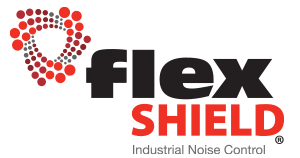Call 1300 799 969 | Contact Us


Home » What manufacturers need to know about workplace noise risks
Noise is a constant in Australian manufacturing environments – whether it’s in food processing, product assembly, or heavy-duty fabrication. And while it’s often accepted as “just part of the job”, in fact, industrial noise can quietly undermine the health, safety and efficiency of your operations. Ignoring it doesn’t just cost hearing. It costs performance and people.
Some of the most common risks from noise in manufacturing workplaces include:
Prolonged exposure to noise above 85 dB can lead to irreversible hearing loss. But the effects don’t end with the ears. Chronic noise exposure causes fatigue, increased stress, and a rise in workplace dissatisfaction. For manufacturing workers already operating under time and quality pressures, this leads to higher absenteeism and lower long-term engagement.
Noise creates confusion. Forklift warnings often get missed, verbal instructions become unclear, and alarms may not be registered in time. In fast-moving industrial environments, delayed reactions or miscommunication can lead to avoidable incidents. Controlling background noise supports clearer decision-making and safer outcomes.
Excessive noise isn’t just a hazard; it’s a distraction. Operators struggling to communicate over the noise of machinery are more prone to errors, delays, and rework. Some sites compensate by rearranging workflows or adding extra personal protective equipment (PPE), both of which introduce additional costs and complexity. Acoustic control helps maintain consistent output without compromising safety.
Managing industrial noise is about more than ticking a compliance box. It’s a proactive way to safeguard your people and streamline your operations. Manufacturers who invest in proper noise control solutions reap benefits that extend far beyond a simple decibel reading – improving retention, safety, and ultimately, their bottom-line results.
If you’re looking to reduce industrial noise without compromising production, speak to the team that understands both sides of the equation: Flexshield. We’ll help you find the right acoustic solution for your facility. Contact us today on 1300 799 969 or get in touch online.